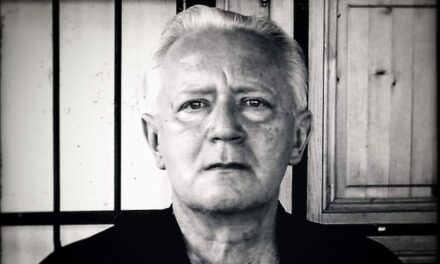One of the most unique exhibitions in the capital can now be visited, either as a stop on an Art Nouveau walk or as a unique event location.
Budapest's currently largest Zsolnay exhibition opened on Monday in the ResoArt Villa, considered one of the capital's most famous art nouveau buildings, next to Városliget.
This villa at the end of the Városliget tree row is one of the most beautiful pieces of the turn of the century Art Nouveau, there are very few buildings of this quality in Europe - praised the house designed by the architect Albert Kálmán Kőrössy for his own family in 1899 at the opening on Monday, the ministerial commissioner of the Liget Budapest project.
László Baán pointed out: it is far from natural that the public can now view the villa and its art collection from the inside, but the person who bought and renovated this building did not restore it for himself, but for the benefit of the public.
Art collector András Szabó will "share" both of his feared treasures with visitors, and the new exhibition will also be included in the Liget+ program offering, which brings together the rich leisure offerings of the City Park into a bouquet, he said.
András Szabó recalled that when he bought the Art Nouveau villa in the 1990s, it turned out that the renovations after the Second World War had not been done in a contemporary way. Therefore, research was started, and the results of this research and numerous archival photographs were used to restore the villa in several stages, returning it to its former glory.
The building functioned as an office building for a long time, but two years ago the decision was made to turn it into an exhibition center in order to present the most beautiful pieces of the rich collection.
According to András Szabó, one of the most significant parts of his collection is the Zsolnay collection of more than a thousand pieces, of which around five hundred works can be seen in the villa.
This is complemented by a collection of about one hundred paintings by József Egry, known as the "painter of Balaton", and a selection ranging from Rippl-Rónai to the masters of the Nagybánya painting school to contemporary artists from Szentendre, which the ResoArt Villa exhibition also offers an insight into, András Szabó said.
Magdolna Költő, the president of the board of trustees of the ResoArt Foundation, added that the villa can be visited with a guided tour after prior registration, and can also be viewed as part of an art nouveau walk starting from the Millennium House in Városliget. In addition, the building also opens its doors as a unique event venue.
As he said, the villa building combines the Hungarian direction of Art Nouveau with the prevailing international style features of the era. The facade is decorated with rich ornaments, the peculiarly shaped stained glass windows are flanked by peacocks, lions' heads and spreading tendrils, and on the pediment are allegorical figures of painting, sculpture and art architecture. The wrought iron fence harmonizing with the facade is the work of Gyula Jungfer.
Upon entering the house, you can admire the huge glass window made in the workshop of Miksa Róth, which survived the vicissitudes of the last century in its original condition, and the colorful wrought iron staircase railing leading up to the first floor is the work of master locksmith József Hochmann.
As the staff of the ResoArt Foundation said, the Zsolnay exhibition, which occupies four rooms of the house, presents the factory's success story from the 1870s to the end of the 1920s, tracing how Zsolnay became a world-famous company from a small Pécs manufactory.
In the first, "family" room, you can see the ceramics designed by Teréz Zsolnay and Júlia, inspired by Hungarian ethnographic motifs and oriental influences, as well as the works of Júlia's husband, Tádé Sikorski, including a 185-centimeter-high giant vase bought for HUF 16 million, which used to be it could have been a decoration of the Gellért Hotel.
In the next room, Sikorski's ceramics embellished with rich ornamentation were given a separate display case, against which Ármin Klein's Western works, mainly following Renaissance patterns, form a contrast.
Although a significant part of Zsolnay's income came from architectural and industrial ceramics, the decorative ceramics produced by the factory were considered a real luxury item, in its heyday Zsolnay used 34 kilograms of gold per year to decorate them.
The exhibition presents the works of art of the 1890s, which often imitate embroidery, are pierced many times, are technically brilliant, and show an almost extreme proliferation of shapes and colors.
The factory's second golden age was brought about by the Art Nouveau period and the discovery of eosin glaze, this period is examined in the Zsolnay room on the ground floor. The works of the designers of the new era, among others Sándor Abt Apáti, Lajos Mack and Mihály Kapás Nagy, are considered the style-creating works of the Hungarian Art Nouveau, and sometimes they even predate Art Deco.
for the ResoArt Villa exhibition and guided building tours can be booked Liget Budapest ticket system
MTI












